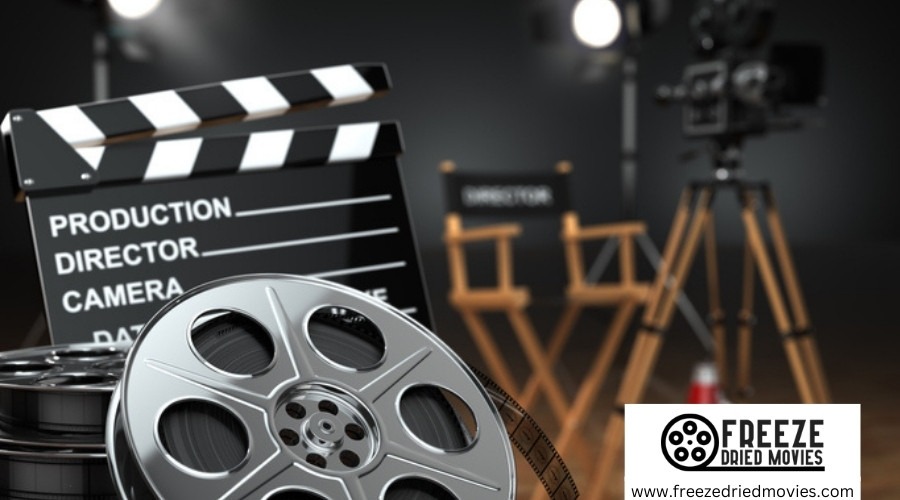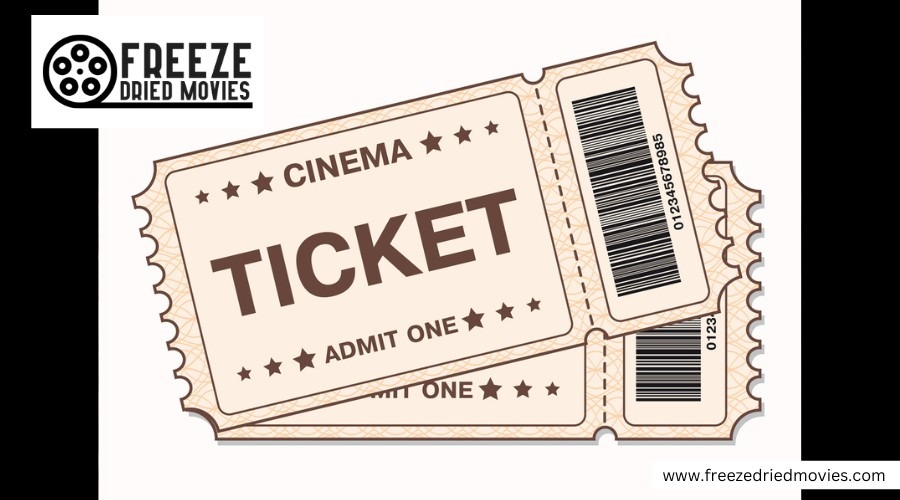How Long Were Movies in the 1950s?
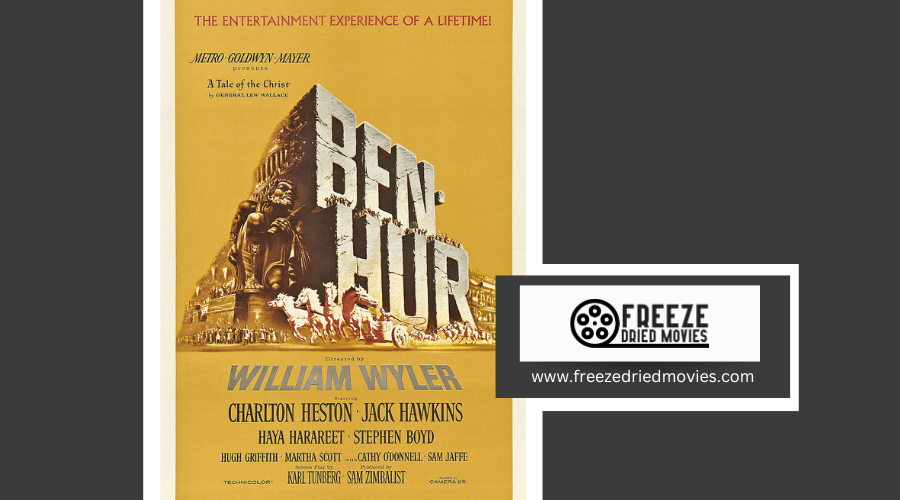
During the 1950s, most feature films typically aimed for runtimes between 90 and 120 minutes. This duration struck a balance between storytelling depth and viewer engagement, often favoring concise narratives. However, some epic films like "Ben-Hur" exceeded three hours. The competition from television and advancements in technology significantly influenced these lengths. Different genres and directors also played a role in shaping these trends, leaving a lasting legacy on cinematic history. Let's explore this intriguing period further.
Historical Context
The 1950s were a transformative period for the film industry, marked by a notable increase in average film lengths, typically ranging from 90 to 120 minutes. This shift reflected a trend toward more elaborate and extended narratives in the post-World War II era. Films like "Ben-Hur" (1959), which exceeded three hours, exemplified this trend, although the average film length generally remained under two hours.
One major factor driving the production of longer movies was the competition from television. To lure audiences back into theaters, filmmakers embraced longer runtimes, offering more content and spectacle. These extended narratives provided a more engaging experience that television couldn't match at the time.
The success of longer films in the 1950s laid the groundwork for the blockbuster phenomenon of the 1960s. The standards set during this decade influenced the future direction of movie lengths, establishing a new norm. Despite these changes, the average film length remained around two hours, balancing audience engagement and storytelling depth effectively.
Average Runtime
When examining movies from the 1950s, you'll observe that most feature films had a runtime between 90 and 110 minutes. This typical duration balanced audience engagement with storytelling efficiency. Factors such as the rise of widescreen formats and the demands of genre conventions also influenced these runtimes.
Typical Film Duration
During the 1950s, movie durations typically ranged from 90 to 120 minutes. This length was considered ideal for balancing storytelling depth with audience engagement. Studios aimed to keep films within this duration to ensure viewers remained captivated without feeling overwhelmed.
Several factors contributed to this typical film duration:
- Audience Preferences: Many successful movies had runtimes under 100 minutes, catering to viewers who favored concise storytelling.
- Technological Advancements: The introduction of widescreen formats enabled filmmakers to create visually expansive tales, often resulting in slightly longer runtimes.
- Competition with Television: As television became more popular, filmmakers extended movie lengths to provide a more substantial alternative to the shorter formats seen on TV.
Despite some notable exceptions, like "Ben-Hur" (1959) with its 212-minute runtime, the average movie in the 1950s stayed within the 90 to 120-minute range. While epics ventured into longer durations, most films adhered to this standard to maintain a balance between thorough narrative exploration and viewer retention. This approach allowed movies to compete effectively with emerging entertainment mediums while still delivering compelling stories.
Runtime Influences
Many factors influenced the average runtime of films in the 1950s, leading to the typical length of 90 to 120 minutes. One significant influence was the competition from television, which had become a dominant entertainment medium. To lure audiences back to theaters, major studios started adopting longer runtimes for epic films. These films, like "Ben-Hur," often exceeded two hours, providing an engaging cinematic experience that couldn't be matched by TV.
Another factor was the rise of widescreen formats. Filmmakers utilized these new technologies to create visually stunning scenes that justified extended runtimes. Longer films allowed for more complex storytelling and detailed character development, making the cinematic experience more captivating for the audience.
The industry was also in a period of adjustment. While the average film length stabilized around two hours post-1960, the 1950s saw filmmakers exploring narratives that required more time to unfold. This exploration was a response to evolving audience expectations and the desire to offer something unique compared to television programming.
Influential Films

Influential films of the 1950s left a notable mark on cinema, shaping genres and inspiring future filmmakers. "Them!" (1954) captivated audiences with its introduction of the giant monster genre, making a significant impact in just 80 minutes. The decade saw an explosion of creativity and technological advancements, leading to diverse themes in filmmaking.
"This Island Earth" (1955) showcased advanced special effects that were revolutionary for its time. With a runtime of 86 minutes, it significantly contributed to the popularity of the sci-fi genre. Its visuals were groundbreaking, drawing audiences into new realms of possibility.
"Forbidden Planet" (1956) is another sci-fi classic that influenced future filmmakers. With a runtime of 98 minutes, it featured pioneering storytelling and technical achievements that set the stage for future science fiction films. The film's unique narrative and innovative techniques made it a cornerstone for the genre.
"20,000 Leagues Under the Sea" (1954) blended adventure and sci-fi over 127 minutes, setting a new standard for epic storytelling.
"Earth vs. the Flying Saucers" (1956) delivered 83 minutes of groundbreaking visual effects.
Collectively, these films shaped the cinematic landscape of the 1950s, leaving a lasting legacy on the industry.
Genre Differences
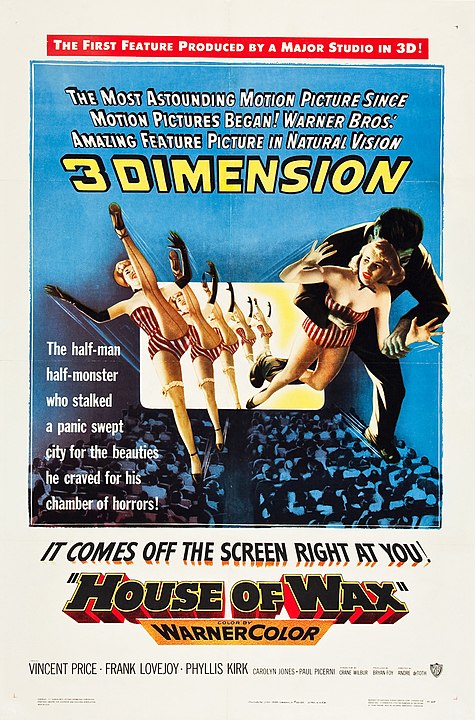
Movies in the 1950s featured a diverse array of genres, each with distinct runtime patterns to meet audience expectations. Science fiction films often exceeded 90 minutes to immerse viewers in detailed futuristic worlds. For example, "Forbidden Planet" (1956) ran for 98 minutes, providing a rich, engaging experience. Conversely, horror films generally kept runtimes shorter, between 80 to 90 minutes, to maintain suspense and intensity. "House of Wax" (1953), at 90 minutes, exemplifies this approach.
Westerns, a staple of 1950s cinema, exhibited more variability in runtime, ranging from 90 minutes to 2 hours. "Shane" (1953), with a runtime of 118 minutes, represents the genre's capacity for expansive storytelling. Comedies aimed to be brief and entertaining, typically lasting between 80 to 90 minutes. "Father of the Bride" (1950), which runs for 92 minutes, fits this trend. Musicals, known for their elaborate production values, often extended from 100 to 150 minutes. "Singin' in the Rain" (1952), at 103 minutes, is a prime example.
| Genre | Example Film | Runtime (Minutes) |
|---|---|---|
| Science Fiction | Forbidden Planet (1956) | 98 |
| Horror | House of Wax (1953) | 90 |
| Western | Shane (1953) | 118 |
| Comedy | Father of the Bride (1950) | 92 |
These runtime differences illustrate how 1950s films tailored their lengths to suit genre-specific storytelling needs.
Production Companies
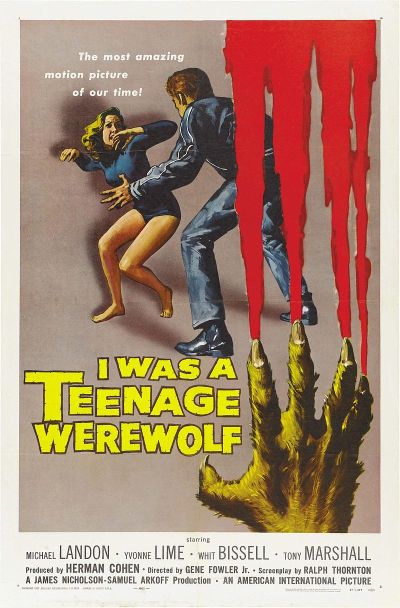
In the 1950s, production companies like American International Pictures and Hammer Film Productions played a crucial role in shaping the film landscape. Specializing in low-budget genre films, they pioneered modern horror and sci-fi. Their innovative techniques and storytelling captivated audiences and influenced future cinematic trends.
Low-Budget Genre Films
Low-budget genre films in the 1950s thrived thanks to companies like American International Pictures (AIP) and Hammer Film Productions. These studios found success by focusing on horror and sci-fi films, catering to niche audiences. AIP capitalized on the popularity of drive-in theaters, producing movies quickly and economically, often with budgets under $200,000.
Key points include:
- Drive-in theaters: AIP targeted these venues to reach teenagers and young adults seeking thrills.
- Fast production: Films like "I Was a Teenage Werewolf" (1957) were made quickly yet grossed several times their production costs.
- International success: Toho Studios' "Godzilla" (1954), produced on a modest budget, achieved significant acclaim worldwide.
Hammer Film Productions specialized in horror films, combining low production costs with compelling storytelling. Their distinctive style resonated with audiences, demonstrating that impactful films don't require large budgets.
Influence on Modern Cinema
The pioneering production techniques and business models introduced by American International Pictures, Toho Studios, and Hammer Film Productions in the 1950s have profoundly influenced modern cinema. These companies revolutionized the film industry by focusing on niche genres, innovative storytelling, and cost-effective production methods.
American International Pictures' legacy is evident in today's independent film scene. Their success with low-budget genre films demonstrated that large budgets are not essential for creating successful movies. They paved the way for indie filmmakers, proving that creativity and strategic marketing can rival big studios.
Toho Studios, renowned for its Godzilla series, set new benchmarks for the sci-fi genre. Their innovative special effects and compelling narratives have influenced global cinema, inspiring modern blockbusters and sustaining the popularity of monster movies. The techniques they developed continue to be used in contemporary special effects-driven films.
Hammer Film Productions redefined horror in the 1950s, establishing production and marketing techniques still emulated by the modern horror film industry. New production companies have followed their lead, catering to growing demands for niche genres. This diversification has enriched the film industry, making it more dynamic and varied. The themes and trends from the 1950s continue to resonate, shaping contemporary storytelling.
Audience Preferences
Catering to audience preferences significantly influenced the film industry of the 1950s. During this decade, the typical film length stabilized around 90 to 100 minutes, aligning with your preference for more concise storytelling—a marked shift from the longer films of earlier eras. The rise of television as a competing entertainment medium greatly contributed to this trend, as limited leisure time led you to favor shorter films that fit more easily into your schedule.
Surveys from the period revealed notable changes in viewing habits:
- Families with television sets reduced their movie theater attendance by 20-30%
- Studios adjusted film lengths to entice you back to theaters
- Many films maintained runtimes well under two hours
Despite the occasional popularity of longer epic films, most 1950s features remained concise, addressing your evolving consumption habits. You sought engaging narratives that didn't demand a lengthy time commitment. This blend of audience demand for shorter, impactful stories and the competition from television set the stage for the average film length of the decade. The industry adapted to your preferences, ensuring that cinema continued to be a compelling entertainment option.
Competitive Landscape
Amid fierce competition for consumer attention, the rise of television in the 1950s drastically reshaped the entertainment landscape. The number of TV stations surged from just 20 in 1948 to 440 by 1960, presenting an unprecedented challenge to the film industry. Families, now equipped with televisions, often chose the convenience of home entertainment over going to the movies, leading to a significant 20-30% drop in film viewership.
The numbers were stark: by 1956, weekly motion-picture attendance in the U.S. had plummeted nearly 50% from its 1946 peak of 82.4 million. This decline underscored the uphill battle Hollywood faced in attracting audiences back to theaters. Economic pressures further complicated the situation, with studios like MGM struggling to maintain profitability amid foreign revenue issues and fierce competition from television.
In response, studios rethought their strategies, focusing on producing high-quality films and adopting groundbreaking formats. Grandiose productions, Technicolor extravaganzas, and widescreen formats like CinemaScope became essential tools in Hollywood's arsenal. These efforts aimed to offer a unique experience that television couldn't replicate, striving to make the movie-going experience an event worth leaving home for.
Technological Impact
In the 1950s, advancements in cinematic equipment and the transition to color film revolutionized the movie-going experience. Filmmakers began extending runtimes beyond the traditional 90 minutes, often averaging around 100 minutes, to fully exploit these new technologies and craft more visually captivating and engaging narratives.
Advances in Cinematic Equipment
The 1950s witnessed significant advancements in cinematic equipment that revolutionized film production and viewing experiences. The introduction of lighter cameras and improved sound recording technology enabled filmmakers to explore more dynamic filming techniques and achieve higher audio quality, thus enhancing storytelling.
Key innovations included:
- Lighter cameras: These facilitated more fluid and versatile filming, allowing directors to experiment with new shooting styles and movements.
- Improved sound recording: Enhanced audio clarity and richer soundscapes made the viewing experience more immersive.
- Portable lighting: This provided greater flexibility for on-location shoots, improving overall production quality.
The adoption of 35mm film became the industry standard, offering superior image clarity and detail that significantly enhanced visual appeal. Additionally, widescreen formats like CinemaScope and VistaVision provided a broader aspect ratio, making films feel grander and more captivating. These advancements in cinematic equipment were pivotal in shaping the distinctive aesthetics of 1950s films and laid the groundwork for future innovations in the industry.
Shift to Color Film
Throughout the 1950s, filmmakers rapidly adopted color film, transforming the cinematic landscape with vibrant and lifelike visuals. Early in the decade, only about 20% of films were in color, but by the end, that number surged to approximately 90%. This shift was driven by technological advancements like the three-color Technicolor process, setting a new standard for visual quality.
Color films were also a strategic response to the growing popularity of television, which primarily offered black-and-white content. By investing in color films, studios aimed to lure audiences back to theaters with the allure of vivid imagery that TV couldn't match. Iconic movies like "The Wizard of Oz" and "Singin' in the Rain" showcased the potential of color film, setting high expectations for visual engagement.
As color films became the norm, studios invested heavily in perfecting this technology. Innovations in lighting and set design maximized the new color capabilities, enhancing the entire cinematic experience. This shift not only changed how movies looked but also elevated the overall quality of filmmaking.
Notable Directors

In the spotlight of 1950s cinema, a cadre of visionary directors left an indelible mark on the film industry with their groundbreaking works. Among these notable directors, Alfred Hitchcock stands out with his psychological thriller "Psycho" (1960), which transformed the horror genre. His innovative storytelling techniques created an atmosphere of suspense that filmmakers still emulate today.
John Ford, another titan of this period, earned acclaim for his Westerns. His film "The Searchers" (1956) is celebrated for its masterful cinematography and compelling narrative, often cited as one of the greatest films ever made. Ford's ability to blend sweeping landscapes with intimate human stories set a high bar for the genre.
Billy Wilder's "Sunset Boulevard" (1950) offers a sharp critique of Hollywood, winning multiple Academy Awards and solidifying Wilder's place among the top directors of the time. His wit and keen observations on the industry's inner workings made this film a standout.
These directors not only shaped 1950s cinema but also laid the groundwork for future filmmakers.
Legacy and Influence
Pioneering directors like Alfred Hitchcock, John Ford, and Billy Wilder profoundly shaped the cinema of the 1950s, leaving a legacy that continues to influence modern filmmaking. Their contributions set enduring standards in narrative and technical excellence. During this era, the average length of feature films typically ranged between 90 to 120 minutes, a norm that persists today. Meanwhile, epic films such as "Ben-Hur" pushed the boundaries of both storytelling and spectacle with their extended runtimes.
In response to the rising popularity of television, filmmakers in the 1950s created visually stunning and engaging films to captivate audiences. This period emphasized grand narratives and elaborate productions, often extending runtimes to maintain viewer interest. Iconic films like "20,000 Leagues Under the Sea" and "Forbidden Planet" not only laid the groundwork for future science fiction but also established a trend of longer feature lengths within the genre.
The influence of 1950s cinema is evident in Hollywood's ongoing focus on spectacle and storytelling. Modern filmmakers continue to draw inspiration from the techniques and structures established during this influential decade, ensuring that the impact of 1950s feature films endures.

